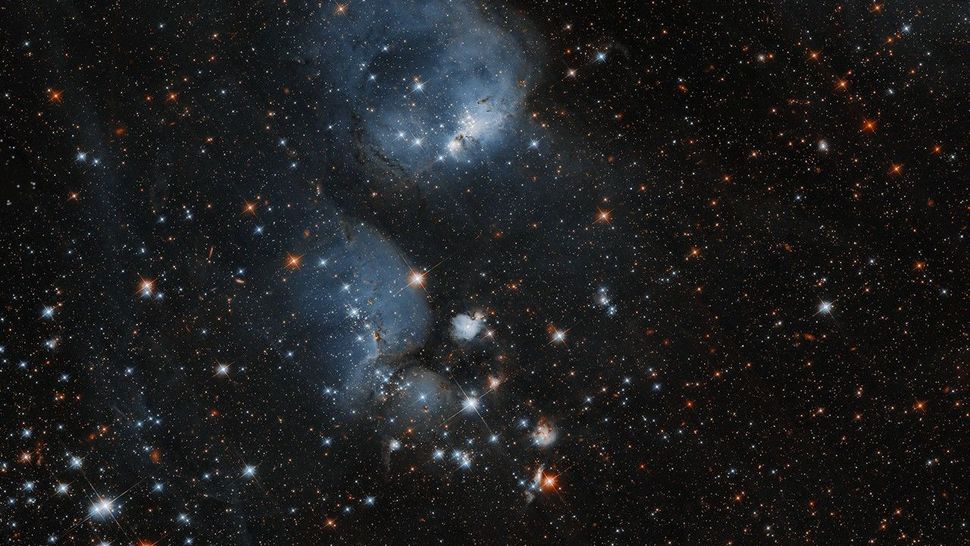Hubble Telescope spies star-forming cocoons in neighboring galaxy (photo)
By Samantha Mathewson
published 13 hours ago
Fluffy strands of cosmic gas and dust illuminated by bright young stars form a beautiful cloudscape in a neighboring nebula.

The open star cluster NGC 460 is located within a greater collection of nebulae and star clusters known as N83, within one of the Milky Way’s nearest neighbors: the Small Magellanic Cloud. (Image credit: NASA, ESA, and C. Lindberg (The Johns Hopkins University); Processing: Gladys Kober (NASA/Catholic University of America))
Young stars enveloped in a transformative cocoon of gas shine brightly in a new image from the Hubble Space Telescope.
The newborn stars belong to a cluster known as NGC 460, which is located in a region of the Small Magellanic Cloud, a dwarf galaxy that orbits the Milky Way. NGC 460 is surrounded by a number of other young stellar clusters and varying sized nebulae, which are clouds of gas and dust that fuel new star formation.
Within this region, also known as N83, there are a number of O-type stars, the brightest, hottest and most massive of main-sequence stars (like the sun), which burn hydrogen at their core. O-type stars are rare; there are thought to be just 20,000 of them in the Milky Way, according to a statement from NASA releasing the Hubble image on March 8.
"The clouds of gas and dust can give rise to stars as portions of them collapse, and radiation and stellar winds from those hot, young bright stars in turn shape and compress the clouds, triggering new waves of star formation," NASA officials said in the statement. "The hydrogen clouds are ionized by the radiation of nearby stars, causing them to glow."
More:
https://www.space.com/space-exploration/hubble-space-telescope/hubble-telescope-spies-star-forming-cocoons-in-neighboring-galaxy-photo
